Lucchese Bootmaker’s Boots Are for Country Stars, Cowboys — and Brides
- Oops!Something went wrong.Please try again later.
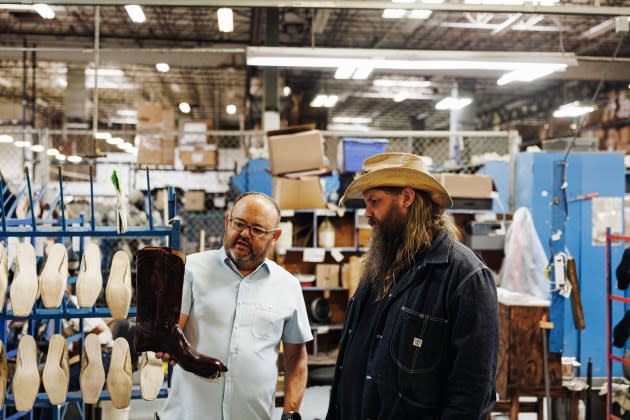
Lucchese Bootmaker may be 140 years old but its boots are still made the same way they were when Salvatore Lucchese and his brothers set up shop in San Antonio, Texas, in 1883.
Sons of an Sicilian shoemaker, the Lucchese siblings opened a bootmaking shop at Fort Sam Houston, a U.S. Cavalry School, servicing the military officers stationed at the location. It was called Boots & Shoes.
More from WWD
Lauren Akins and Ranger Station Collaborate on Daisy and Cowboy Perfume Collection
That '70s Jewelry: High-end Vintage Finds at Particulieres Are an Art Gallery of Adornments
From the beginning, Lucchese believed in offering the highest quality components while also embracing the latest technology to advance his craft. The company is said to have purchased the first “inseamer” machine shipped to the Southwest and, according to his grandson Sam Lucchese: “If he got any word of a new machine, he wanted to be the first to try it.”
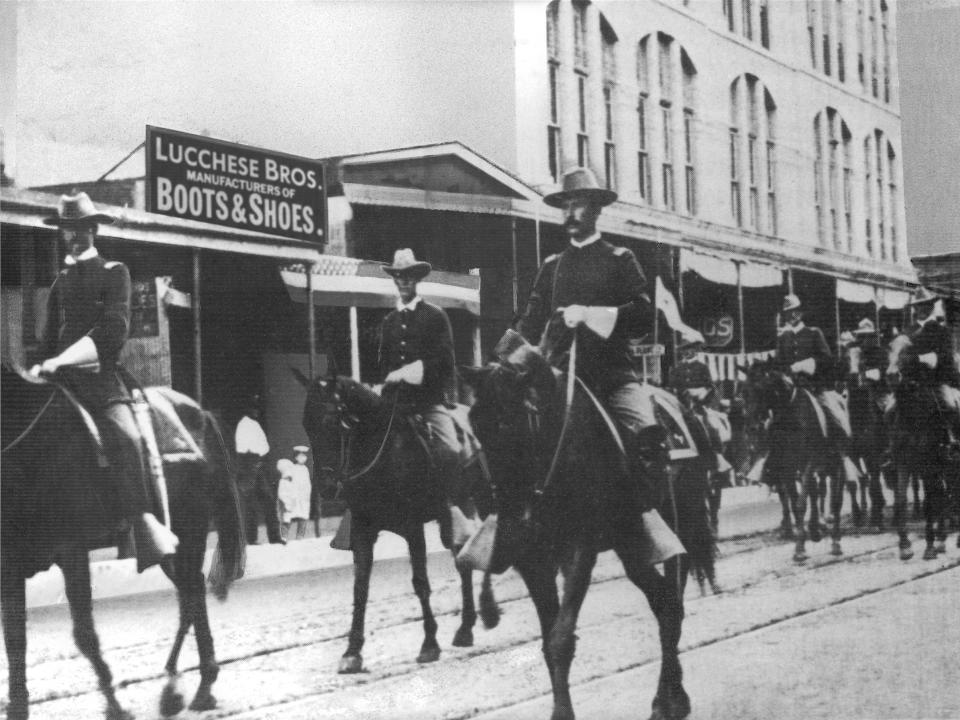
Today, the brand created by the Lucchese family is still considered one of the finest bootmakers in the U.S. The company boasts that each pair is touched by 180 to 200 hands before completion.
No Lucchese family members remain, with the business now privately held and Texas businessman John Muse serving as chairman. But the production process remains nearly identical to what it was in the beginning and the boots still use a unique last created by Sam Lucchese, who studied the anatomy of the human foot and how people walk and stand.
Still proudly based in Texas — headquarters are in Dallas and the factory is in El Paso — the artisans who create the boots today still use the skills it took centuries to perfect.
When it comes to aesthetics, it’s up to the artisans to match the skins being used as best as possible. Two crocodilian skins, for example, are used to make one pair of boots and craftsmen compare some 20 to 30 options to ensure the closest match. This can sometimes take days.
In one of the first processes after the leather is selected, the artisans guide the needle through the leather by hand to create distinct stitch patterns that illustrate the craftsmanship Lucchese has become known for.
Brass or lemonwood pegs help maintain the integrity of the instep and allow the brand the ability to re-sole the boot when the bottoms wear out. Lemonwood is more malleable than metal and expands and contracts with moisture much like leather, the company says. Each peg is carefully hammered into small holes cut into the leather outsole and painted over during finishing.
The upper is secured to the sole by hand, is wet with water, pulled over the last and tacked. Once dry, the pegs are inserted.
The leather is then cut using steel-rule dies to align the grain precisely, at which point a clicking machine applies at least 20 pounds of pressure to create an exact cut without fraying.
Over the years Lucchese boots form distinct marks and creases with some models employing a 10-year stonewash measure engineers have developed that is similar to that used to distress denim. The boots are then polished with a brush, which darkens the leather and creates the texture.
Not surprisingly, finding people who have the skills necessary to create its products remains the company’s single-biggest challenge, says Trey Gilmore, director of product development and men’s design. The average age of the workers in its factory is upper 50s, but some younger people have begun to come into the business lately.
“There’s been a surprising new surge of younger people who like to work with their hands,” he says, adding that it “takes an artist’s eye” to create the intricate patterns on Lucchese boots.
Case in point is the 140th anniversary boot the company created last month. The commemorative boot was designed to reference not only the history of the brand but also the state it still calls home.
Only 140 boots will be made, all special orders, and they will be numbered and come with an authorization certificate and a commemorative boot bag.
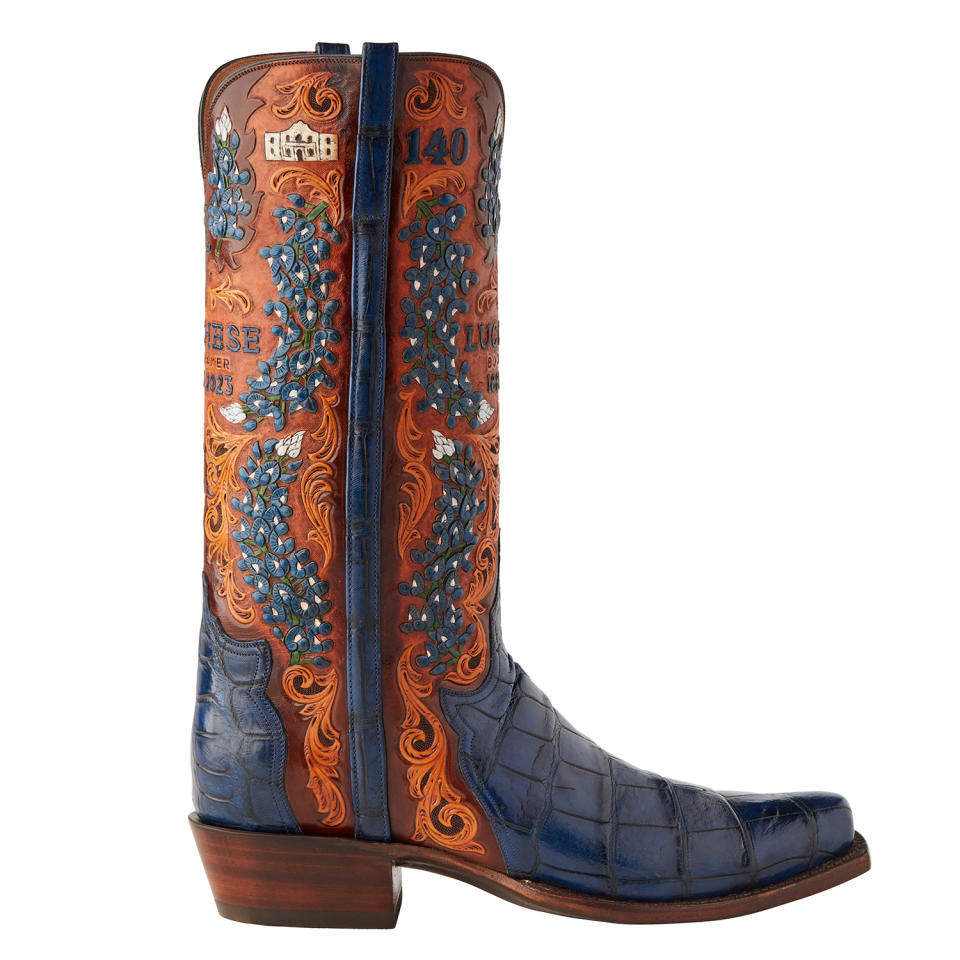
The boots are created from vegetable tanned leather and intricate carvings have been added by employing a “newer age” 3D process that allows images of the petals of the Texas Blue Bonnet, for example, to be raised. There are also references to the American cowboy in patterns that have historically been found on everything from saddles and belts to holsters, an image of the Alamo, and the Lucchese Bootmaker name and number of years it’s been in business: 1883 and 2023.
The boots retail for $15,995.
Of course, not every boot the company produces is this labor-intensive — or expensive. Although boots remain the bulk of the business, Lucchese is now a lifestyle brand that offers leather accessories, small leather goods and other complementary products such as lambskin vests, hunting jackets, polos, button-down shirts, felt hats, riding apparel and other products.
“There’s a head-to-toe offering for the Western lifestyle aficionado,” says Austin Ripmaster, vice president of brand communications and the creative suite. “Obviously, we are Lucchese Bootmaker, so foundationally we are incredibly driven by our footwear business, which remains our core and our crown jewel. But we certainly have offerings and solutions for all forms of Western lifestyle, ranging from hunting lines to formalwear.”
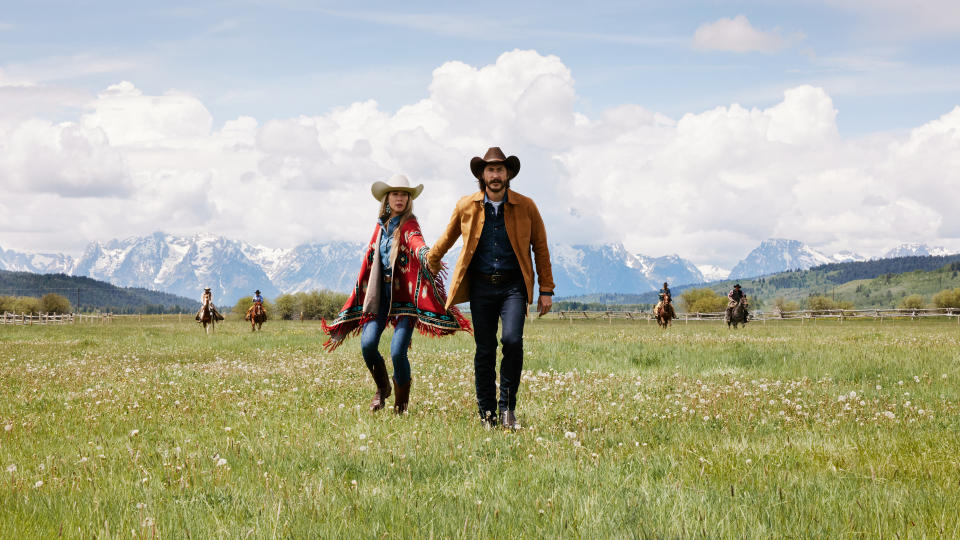
The company operates 23 stores around the country in “destination Western towns” such as Steamboat Springs, Colo., Bozeman, Mont., Santa Fe, N.M., and others.
The brand has also begun working with some country music artists of late and counts Parker McCollum and Chris Stapleton as ambassadors and co-creators.
“Country music and cowboy boots go together like peanut butter and jelly,” Ripmaster says. “Over the years, we’ve worked with artists from Elvis Presley and Johnny Cash to Eric Church. Recently our brand has made a really monumental business model shift from being a wholesale distributor brand to a direct-to-consumer brand. And with that business model transition, it has allowed us to have some more structure to the arrangements and the endorsements we’re able to do.”
He says Stapleton is the “pre-eminent songwriter” in country music today and is “almost a poet. And he adores our brand.” The relationship began after Lucchese realized it was bidding against the singer to buy vintage boots on eBay, so the company decided to reach out and propose the two work together instead.
Since then, Lucchese has created a special Chris Stapleton co-branded collection of boots with a portion of the proceeds being donated to Stapleton’s charity, Outlaw State of Kind, a foundation that supports a number of different organizations including Feeding America and Habitat for Humanity.
McCollum, who Ripmaster describes as the “quintessential red-dirt Texas boy,” was born and raised in the state and is “emerging as a global superstar.” Together, they designed a co-branded collection that is intended to appeal to his audience. “He’s our Michael Jordan,” Ripmaster says.
Beyond that, the company will be seeking additional partners in the future. “We’re keeping our ear to the ground for the next fit,” he says.
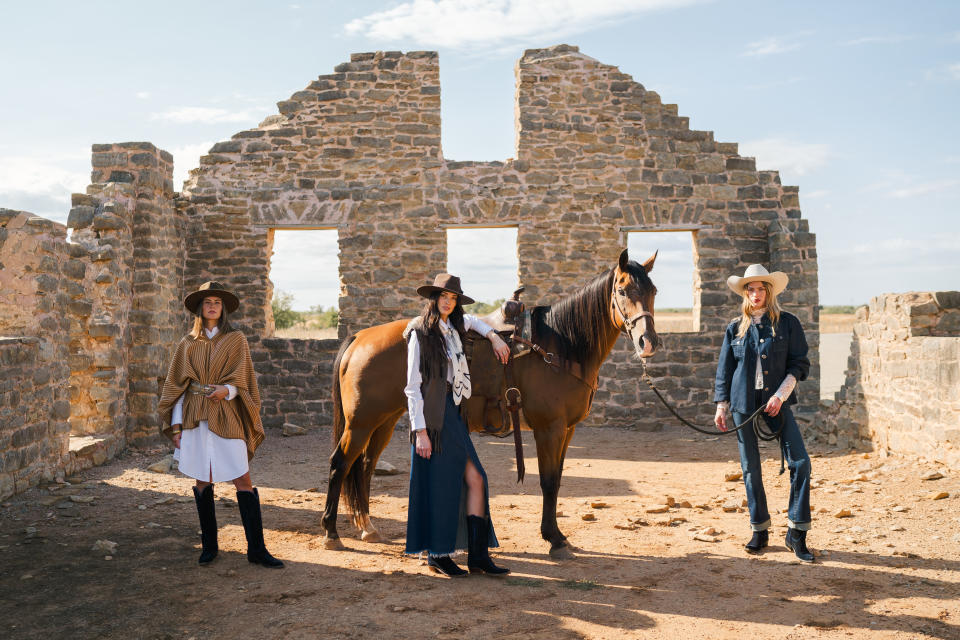
While men’s boots still remain the bulk of Lucchese’s business, women’s has become more important to the brand in recent years with models such as the Priscilla knee-high boot gaining in importance. In fact, the model is the number-one selling boot in the company.
Its bridal collections are especially in demand as women seek something customized to them for their special day. “We can’t keep them in stock,” says Ripmaster.
“In Texas, cowboy boots have come full circle to represent the full life experience,” Gilmore sayss. “Because of the uniqueness of each piece, every bride — and groom — wants something custom and we’re uniquely positioned to give them that. Even our inline boots are all different so a lot of folks have embraced them for pre-wedding events to weddings and after.”
Best of WWD

